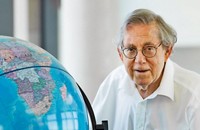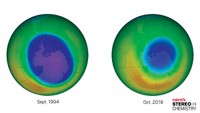Advertisement
Grab your lab coat. Let's get started
Welcome!
Welcome!
Create an account below to get 6 C&EN articles per month, receive newsletters and more - all free.
It seems this is your first time logging in online. Please enter the following information to continue.
As an ACS member you automatically get access to this site. All we need is few more details to create your reading experience.
Not you? Sign in with a different account.
Not you? Sign in with a different account.
ERROR 1
ERROR 1
ERROR 2
ERROR 2
ERROR 2
ERROR 2
ERROR 2
Password and Confirm password must match.
If you have an ACS member number, please enter it here so we can link this account to your membership. (optional)
ERROR 2
ACS values your privacy. By submitting your information, you are gaining access to C&EN and subscribing to our weekly newsletter. We use the information you provide to make your reading experience better, and we will never sell your data to third party members.
Analytical Chemistry
Newscripts
Seawater Greenhouses, Gelatinous Labels, A Nobel Medal’s Dark Side
by Alex Scott
December 8, 2014
| A version of this story appeared in
Volume 92, Issue 49
No one in their right mind would build a greenhouse in a scorching hot coastal desert because no plants could grow in it. No one, that is, except Charlie Paton. He’s a British engineer with a low-tech idea who has convinced venture capitalists to back his seawater-cooled and -irrigated concept.
Paton’s approach uses photovoltaic panels to pump seawater into a greenhouse. The seawater is then poured over a simple honeycomb cardboard evaporator at the windward end of the greenhouse to remove the salt. This leads the air inside the greenhouse to become moist and cooler by 10–15 °C. Air at the downwind end of the greenhouse is then heated with seawater warmed by the sun in pipes and subsequently brought into contact with an array of seawater-cooled pipes that condense moisture in the greenhouse air to provide freshwater for the plants.
Although he’s already started selling his seawater greenhouses, Paton realizes that the basis of his idea sounds as mad as a box of frogs. “The logic doesn’t make sense because on every level it’s the opposite of what we do,” he says. But the technology even reduces the need for chemical treatments as it prevents some airborne bacteria from entering the greenhouse.

Bacteria as well as mold were on Solveiga Pakstaite’s mind when she came up with her own novel technology. The 23-year-old industrial design graduate from England’s Brunel University London has done some thinking outside of the food box and invented a replacement for sell-by-date labels on food packaging based on bioreactive gelatin. Pakstaite’s gelatinous invention features a small pad affixed to a food package. The pad is composed of a base layer of plastic film, covered with a plastic bump sheet, then a layer of gelatin, and finally a plastic film to keep the gelatin in place.
As the food turns bad, the gelatin, which is a protein, decays and turns into a liquid, enabling the consumer to feel the plastic bumps. Pakstaite thinks time’s up for the less accurate, printed sell-by dates we currently use. She is now developing a prototype and testing it in lab conditions.

Testing conditions were certainly in play when Brian Schmidt, who was awarded the 2011 Nobel Prize in Physics for codiscovering dark energy, tried to take his Nobel medal through a U.S. airport X-ray scanner. As Scientific American recently reported, Schmidt disclosed that when traveling with his Nobel medal, “bizarre things can happen.” In one incident, security staff in the Fargo, N.D., airport became confused because the half-pound solid-gold Nobel medal showed up on the X-ray scanner as completely black. The medal had absorbed all of the X-rays. The security staff had never seen this happen before.
When asked who had given him the medal, Schmidt replied that it was the king of Sweden. When asked why, he responded that it was “because I helped discover the expansion rate of the universe was accelerating.” At this point Schmidt recalls that the security personnel lost their patience but eventually let him pass. Just as well then that he did not inform them that Alfred Bernhard Nobel, whose face appears on the medal, was a renowned inventor of explosives.
Alex Scott wrote this week’s column. Please send comments and suggestions to newscripts@acs.org.




Join the conversation
Contact the reporter
Submit a Letter to the Editor for publication
Engage with us on Twitter